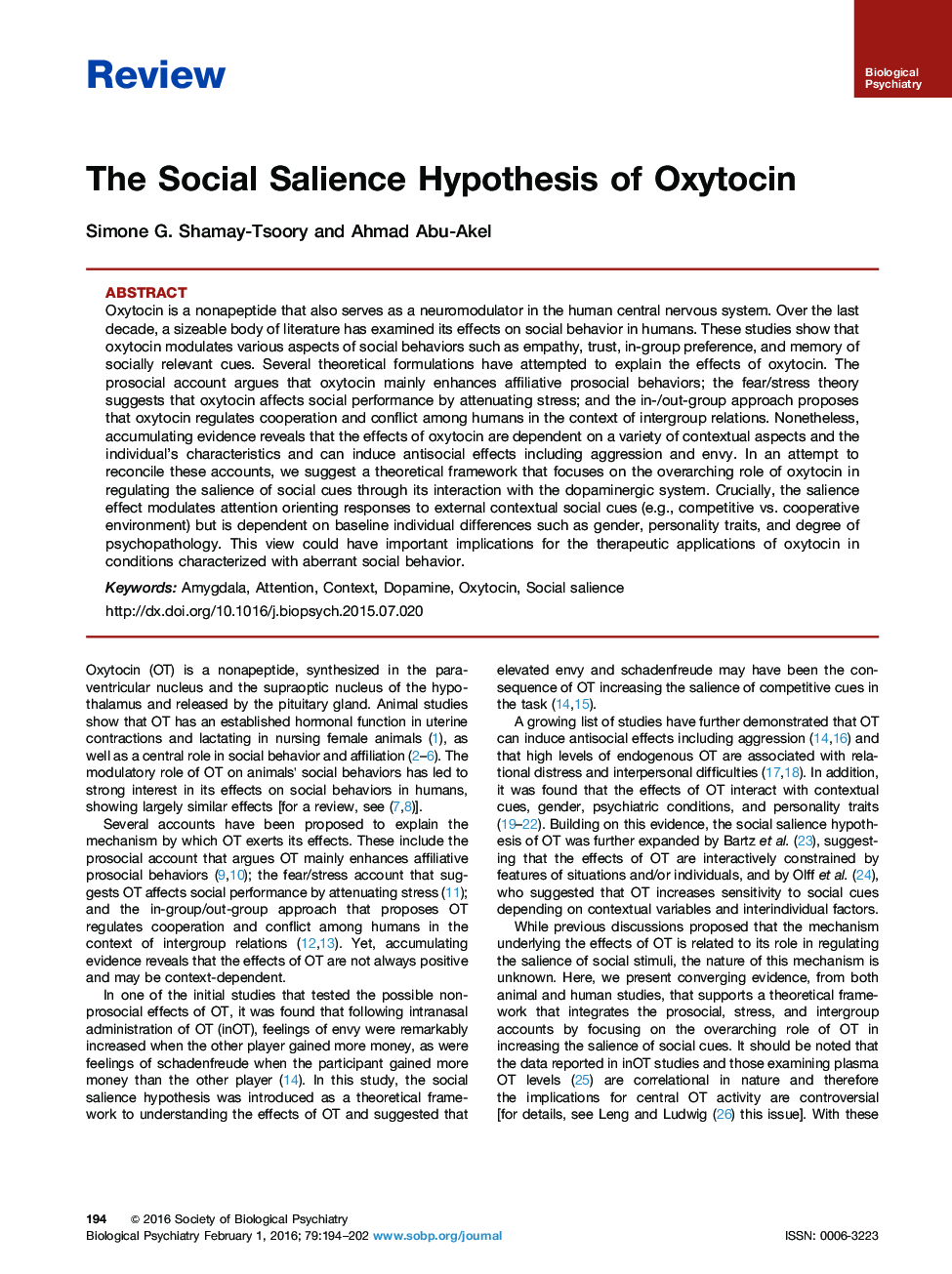| کد مقاله | کد نشریه | سال انتشار | مقاله انگلیسی | نسخه تمام متن |
|---|---|---|---|---|
| 6226643 | 1276392 | 2016 | 9 صفحه PDF | دانلود رایگان |
Oxytocin is a nonapeptide that also serves as a neuromodulator in the human central nervous system. Over the last decade, a sizeable body of literature has examined its effects on social behavior in humans. These studies show that oxytocin modulates various aspects of social behaviors such as empathy, trust, in-group preference, and memory of socially relevant cues. Several theoretical formulations have attempted to explain the effects of oxytocin. The prosocial account argues that oxytocin mainly enhances affiliative prosocial behaviors; the fear/stress theory suggests that oxytocin affects social performance by attenuating stress; and the in-/out-group approach proposes that oxytocin regulates cooperation and conflict among humans in the context of intergroup relations. Nonetheless, accumulating evidence reveals that the effects of oxytocin are dependent on a variety of contextual aspects and the individual's characteristics and can induce antisocial effects including aggression and envy. In an attempt to reconcile these accounts, we suggest a theoretical framework that focuses on the overarching role of oxytocin in regulating the salience of social cues through its interaction with the dopaminergic system. Crucially, the salience effect modulates attention orienting responses to external contextual social cues (e.g., competitive vs. cooperative environment) but is dependent on baseline individual differences such as gender, personality traits, and degree of psychopathology. This view could have important implications for the therapeutic applications of oxytocin in conditions characterized with aberrant social behavior.
Journal: Biological Psychiatry - Volume 79, Issue 3, 1 February 2016, Pages 194-202
